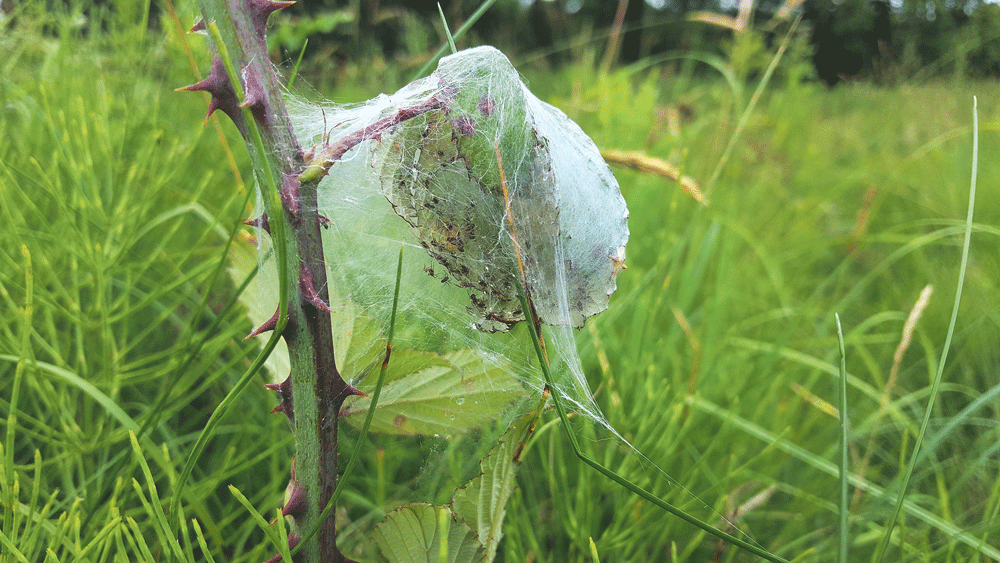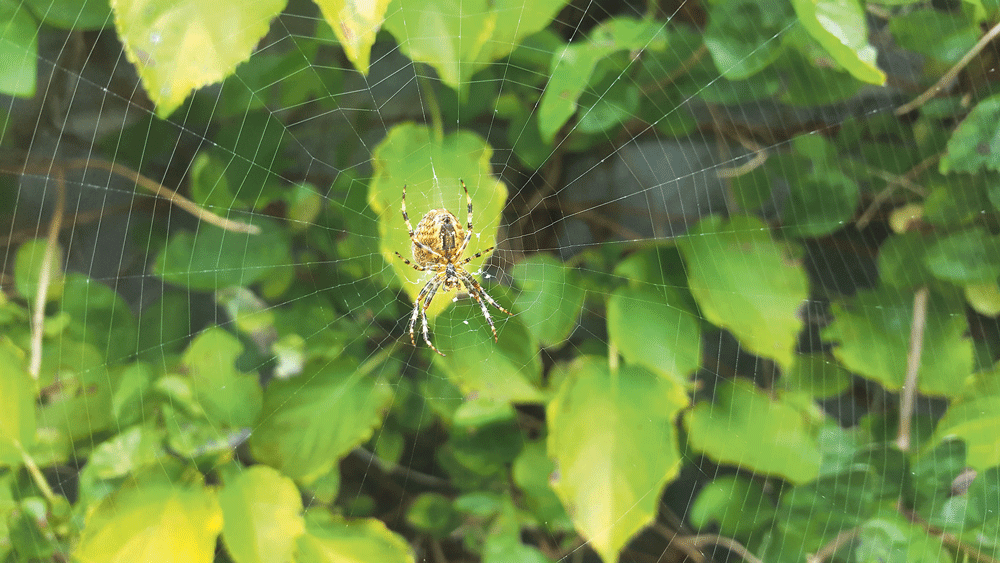

Nature on our doorsteps: Different types of spider webs
Rosaleen Dwyer is the County Heritage Officer at South Dublin County Council – every week she gives us an insight into the natural heritage around us and the beautiful biodiversity of the plants and creatures.
Not all spiders build webs.
Of those spiders that do, different spider species are often referred to by the type of web that they make.
Funnel web spiders make a tunnel-shaped web into a hole in a wall or a crack in wood.
The outer edge of the tunnel expands out like a funnel towards the surface. The spider patiently waits inside the tunnel, out of sight.
When prey passes by and walks over the funnel threads, the spider quickly rushes out and drags the prey back into the tunnel.
Nursery web spiders are also hunters, but these roam freely and catch prey wherever they can.
Their name reflects the use that they make of the web that they construct.
When the female lays her eggs, she builds a protective web around them.
This tent acts like a nursey where they can safely develop. Shortly after the spiderlings have hatched, they leave the nursery and the web disintegrates.

The Nursery web spider makes a web to protect its developing eggs and spiderlings
Sheet web spiders create the delicate lacey sheets seen on bushes on autumn mornings after light misty rain.
This group of spiders includes the tiny Money spider that drifts through the air on a wispy thread of silk, waiting to land and create its web.
Autumn is also a good time of the year to spot the large webs of the orb web spiders, such as the Garden spider.
These build the typical flat web, stretched between the stalks of plants.
This spider first lays out the main radial threads that form the scaffolding for the web.
These stretch across the space where the spider has chosen to build. It then lays down the spiral threads that go around and around to form the circular that gives this group of spiders their name.
Orb web spiders spend much of their time in the centre of the web, waiting to detect vibrations in the silk when insect prey become trapped.
The webs are relatively fragile, however, and many need to be rebuilt every few days.

